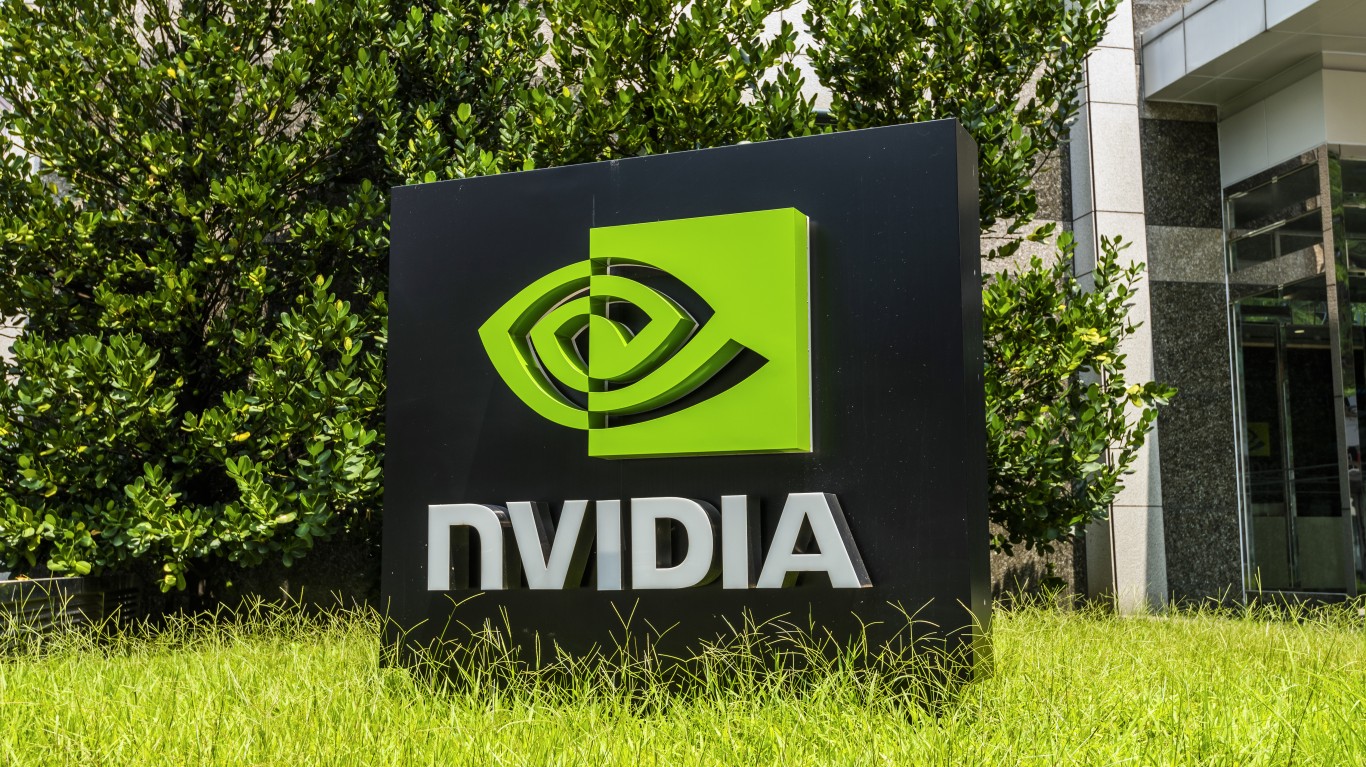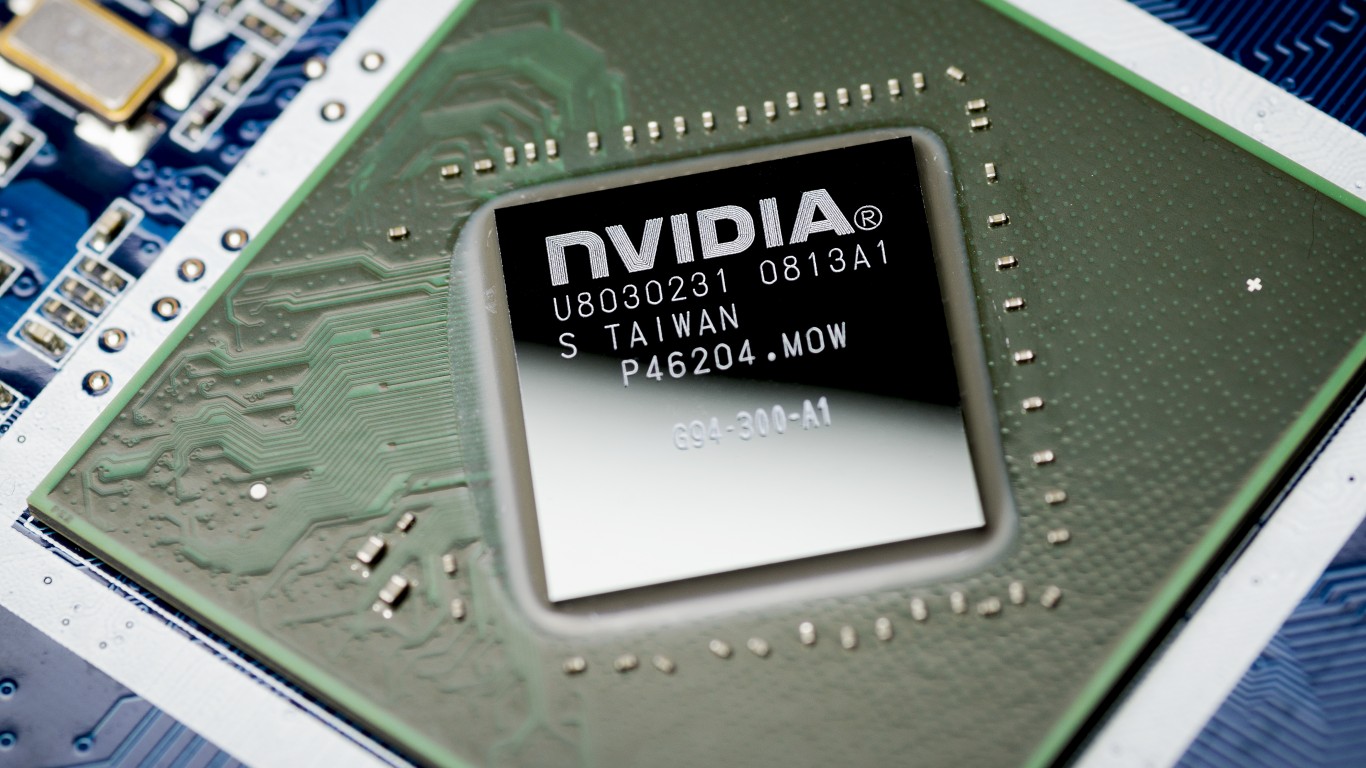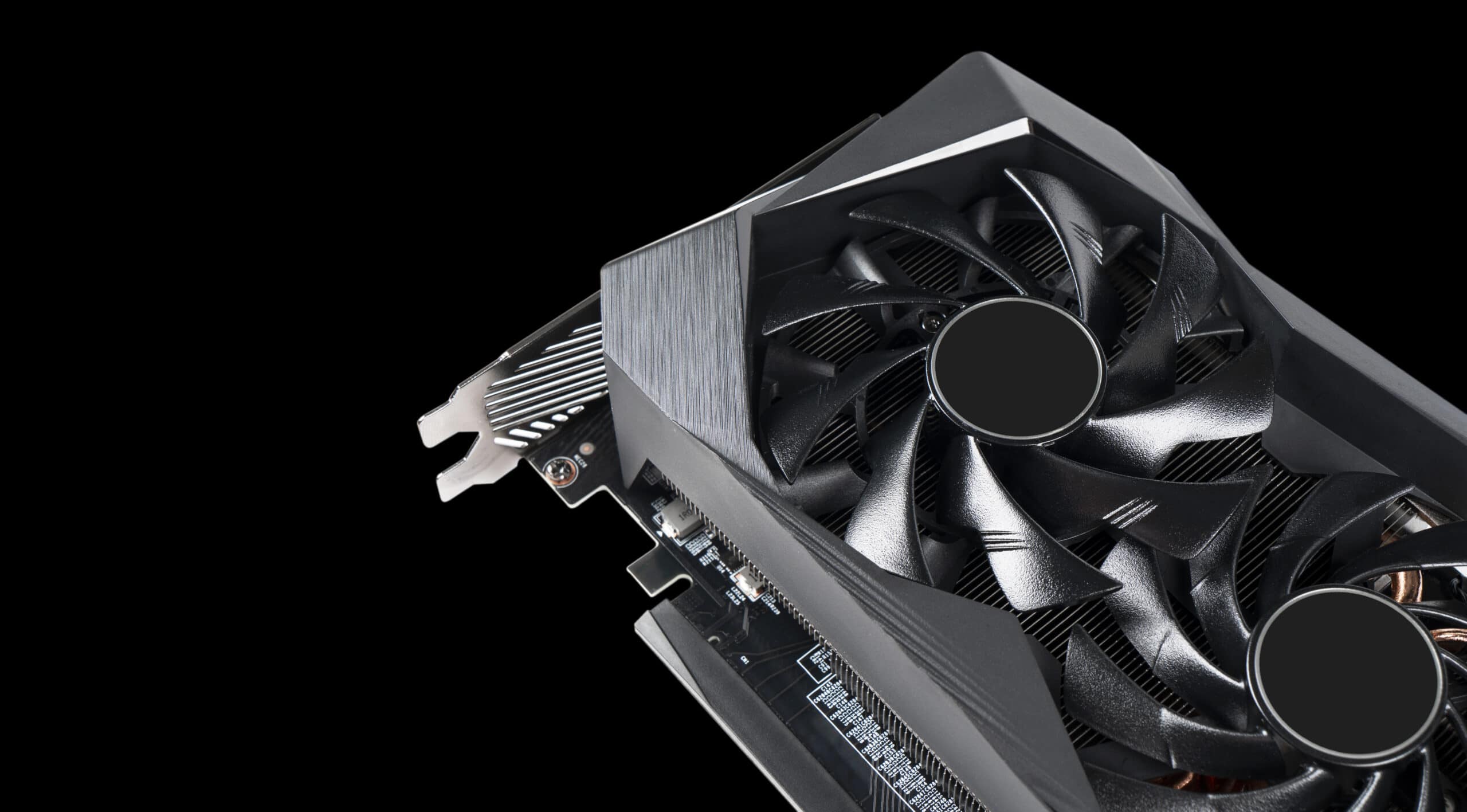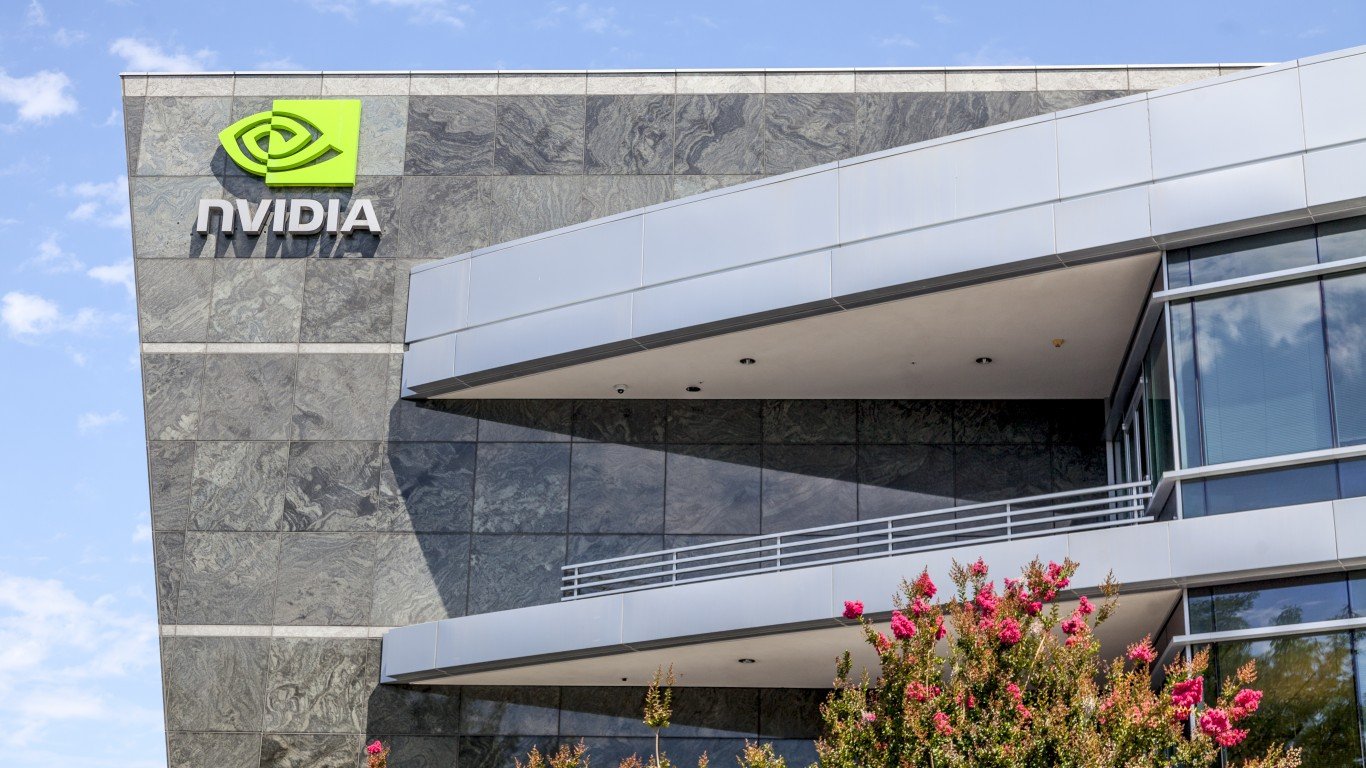

NVIDIA (NASDAQ:NVDA) is one of the largest and most well-known GPU suppliers in the world. Whether you work with AI, supercomputers, engineering, or just enjoy gaming on PC, you have probably used an NVIDIA product. But for all their success, how much do their top leaders get paid, and how does that compensation compare to the regular people who work in the company? The disparity between executive compensation and the low wages paid to those who actually do the work has become a more contentious topic than ever before as that disparity grows and causes noticeable societal problems. If you’re wondering how the little GPU in your new gaming rig fits into this system, look no further. This is how much NVIDIA’s top executives made in 2023.
For this article, we use compensation data reported by NVIDIA and national averages for other labor statistics as reported by various labor and employment surveys.
Background on NVIDIA’s Executive Compensation

NVIDIA is a fabless design company, which means that all the manufacturing is done by other companies NVIDIA contracts to build their designs. It is primarily focused on software and the engineering behind the products it produces and leaves the actual specifics of how to build it to its partners. Even if it wanted to pay everyone in the company a fair wage, most of the work being done is outside the walls of their Santa Clara offices.
NVIDIA also produces APIs, SOCs for phones and cars, and AI hardware and software. The GPUs it is most famous for are used in science research, manufacturing, architecture and engineering, and gaming and entertainment. Their products are used in supercomputers all over the world.
NVIDIA reached the $1 trillion market valuation in May of 2023 after significant growth during and after the COVID-19 pandemic.
The median employee pay at NVIDIA is $228,078.00. This may sound like a lot, but it is misleading. Remember that all of the actual manufacturing and hands-on factory work is done by other companies, whereas NVIDIA is full of design and programming experts who do not make minimum wage.
That high median pay explains why NVIDIA’s CEO pay ratio is a little lower than other companies. But it remains absurdly high at a ratio of 94:1. This means that CEO Jen-Hsun Huang is paid 94 times more money every year than the median employee. It is also important to remember that executives are not typically paid a straight salary. The largest portion of their compensation is paid in equity. This is done for two reasons: to incentivize them to act in the company’s best interest since good decisions will increase the value of that stock, and most of these executives have their basic needs covered by a small salary, so they don’t need a higher salary and prefer stocks that are an asset that increases in value and are not taxed the same way as salaries.
The pay for CEOs has exploded in the last few decades. In 202 it has increased more than 1,322% since 1978, while minimum wage and salary averages have remained largely unchanged and stagnant. The increase in those CEO pay packages comes from them taking a larger portion of the profits their companies make. While companies continue to grow and become more successful, the people at the bottom are seeing less and less return for their fair labor. This means more than just an unfair sharing of profits, it actually impacts employee motivation, the ability for families to afford basic goods and services, and is pricing people out of their homes. The gap between executives and the people who actually make the products is an issue, driven by greed, that is actively destroying the American dream.
As executive pay continues to increase at a higher rate than the minimum wage, or even the median worker pay, average Americans will find that they are increasingly unable to afford the products they work to produce. As we see already, many middle-class and lower-class families are having to take on significant amounts of debt just to survive while the fruits of their labors go to line the pockets of the wealthy.
1. Jen-Hsun Huang

- Position: CEO
- 2023 compensation: $21,356,924
Jen-Hsun Huang (he also goes by Jensen) was born in Taiwan in 1963 before moving to Thailand at a young age and then to the United States when he was 9. He skipped two years of high school and graduated when he was 16. Huang founded NVIDIA in a Denny’s restaurant in 1993 with two others and quickly found success. He is among the highest-paid CEOs in America, ranking 61st in 2007. He has won several awards for his work including entrepreneurship, engineering, philanthropy, and in Time’s 2021 list of the most influential people in the world.
Huang has run NVIDIA ever since its founding, even during the late 90s when most technology companies were struggling to survive. At one point, Huang said he only had about thirty days of payroll left before they would be out of business.
Huang is also known for his technology observation, now known as “Huang’s Law”. Huang’s law states that the performance output of GPUs will more than double every two years. It is an observation in contrast to the well-known Moore’s law which predicted that the total number of transistors in a microchip will double about every two years.
He has donated significant amounts of money to the schools he attended, including $50 million to Oregon State University, $30 million to Stanford University, and $2 million to Oneida Baptist Institute. Huang is worth $54.9 billion as of January 2024, making him the 24th richest person in the world.
2. Ajay K. Puri

Video card with fan. Gaming graphics card for video games and cryptocurrency mining. Game video card isolated on black background. Electronic device, computer part. GPU card
- Position: Executive Vice President, Worldwide Field Operations
- 2023 compensation: $10,627,698
Ajay Puri joined NVIDIA in 2005 in charge of worldwide sales and assumed his new position over field operations in 2009. Before joining NVIDIA, Puri had a long history of sales and management with technology companies at Sun Microsystems, Inc., Hewlett-Packard Company (NYSE:HPQ), Booz Allen Hamilton, and Texas Instruments, Inc.
He graduated with a bachelors from the University of Minnesota, and a Masters degree from the California Institute of Technology, and an MBA from Harvard.
As of 2021, Puri was worth $162 million.
3. Debora Shoquist

- Position: Executive Vice President, Operations
- 2023 compensation: $9,115,250
Debora Shoquist joined NVIDIA in 2007 with a long and impressive history in operations roles at other companies including Quantum and HP. As the executive over operations, Shoquist is responsible for product manufacturing and testing, supply and logistics, quality management, and facility maintenance.
She holds two bachelor’s degrees from Kansas State University and Santa Clara University.
4. Colette M. Kress

Top down view of colorful illuminated gaming accessories laying on table. Professional computer game playing, esport business and online world concept.
- Position: CFO
- 2023 compensation: $10,917,228
Like her colleagues, Colette Kress brought a significant amount of experience to the team when she joined NVIDIA in 2013 with over 25 years working in technology. She worked at Cisco and Texas Instruments, and at Microsoft as the CFO of Server and Tools for 13 years.
Kress has a bachelor’s degree from the University of Arizona and an MBA from Southern Methodist University.
5. Timothy S. Teter

- Position: General Counsel
- 2023 compensation: $9,107,174
Timothy (Tim) Teter is the newest member of the executive team, having joined NVIDIA in 2017 after working at Cooley LLP for more than 20 years. His work was primarily focused on patent and technology suits, which made him particularly valuable to NVIDIA when he joined the team. He isn’t just a typical lawyer, either — Teter was an engineer at Lockheed Missiles and Space Company (NYSE:LMT) before he attended law school.
Teter has a JD from Stanford Law School and a bachelor’s degree from the University of California at Davis.
Sponsored: Find a Qualified Financial Advisor
Finding a qualified financial advisor doesn’t have to be hard. SmartAsset’s free tool matches you with up to 3 fiduciary financial advisors in your area in 5 minutes. Each advisor has been vetted by SmartAsset and is held to a fiduciary standard to act in your best interests. If you’re ready to be matched with local advisors that can help you achieve your financial goals, get started now.
Thank you for reading! Have some feedback for us?
Contact the 24/7 Wall St. editorial team.



